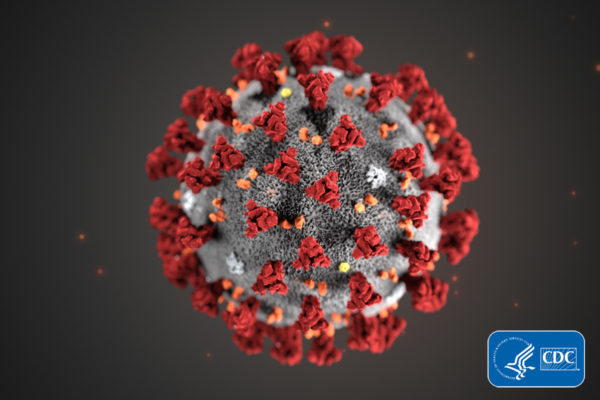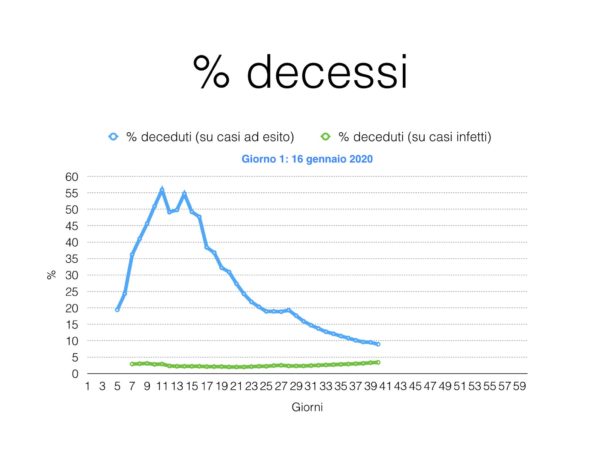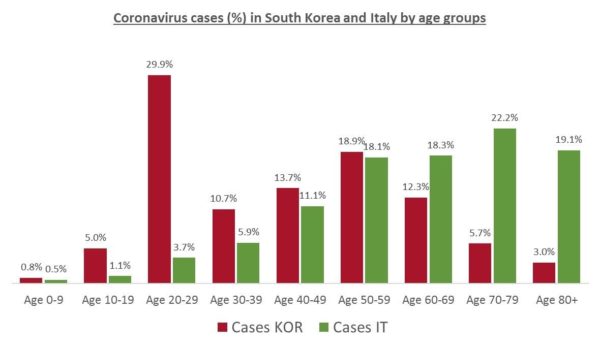They say Winston Churchill won WWII because, unlike other statesmen, he suffered of depression and was prone to pessimism.
Consider by contrast the occasional video footage from real life tragic events: a surreal atmosphere of thoughtlessness pervades the scene just moments before the inevitable. Nothing like in the movies, where actors do everything they can to portray memorable, emotional reactions and the soundtrack creates suspense.
Oh no, reality is subtler than that. Here comes the tsunami. Bystanders move a little further: look, here comes a wave. The scene seems ordinary and inconsequential. But then the wave continues. After only a few seconds it’s already sweeping away debris, cars and tree trunks; a minute later entire houses are floating away.
A fleeting moment separates reckless tranquility from panic and anguish.
Personally, while on one hand of course 9/11 had a huge emotional impact on me, on the other hand I can’t say I was surprised by the sight of the two smoking skyscrapers.
I usually try to come up with all kinds of future scenarios: the goal is learning to think outside the box. But had I neglected to follow closely the news that came from China, I would still have struggled to tune in on the reality of the problem.
I feel I had a good month head-start on the average Italian, in terms of coping with such a harsh and otherworldly predicament.
Right now eyeballs from all over the world are directed at my country. You may want to take notice and begin to prepare, lest you too get caught by surprise.
For days in the face of the Italian Coronavirus Covid-19 epidemic, a form of “prudence” in institutional and media messages prevailed; the general idea was that of avoiding panic, an attitude that by itself betrays a deficiency in the ability to accept reality.
Coming to terms with the realization that we are facing a once-in-100-years catastrophic event is beyond many people’s emotional grasp.
Sadly this intrinsically unprepared attitude involved even some scientists and physicians.
It’s also particularly painful to witness the blunders involving the Trump administration, misguided and disorganized despite the responsibility to protect hundreds of millions of people.
Technically this wouldn’t be our first big epidemic, not even for the recent decades. We had a handful of them; the most famous was SARS, another coronavirus.
But realistically, unless you weren’t perchance involved directly in one of the few clusters, do you even remember what year it was?
On the contrary the 2020 Coronavirus will remain in the collective memory as a turning point, as momentous as 9/11. (Of course many more terrorist attacks were carried out before and after, but their impact was completely different. The same reasoning applies here.)
The situation in Italy is worsening by the hour. On Saturday, March 7, at night, a general blockade in the most affected regions in the North was announced by the media before it even started. As a consequence hundreds of people rushed to Milan train station, fleeing from a Lombardy where the most well-organized regional healthcare system of Italy was deemed already on the brink of collapse (due to the fact that the vast majority of Italian cases were concentrated there).
We can expect them to have brought the infection, on packed trains, to a South chronically lacking adequate hospitals. We’ll see how numbers rise.
Paradoxically during the same weekend ski resorts and Ligurian Riviera seaside towns were really crowded. Panic and unconsciousness, side by side.
A better understanding and communication was needed.
Precious time was lost arguing over pointless side issues like soccer matches being postponed. Leftist activists insisted racism against the Chinese was the real virus. A more drastic, no-nonsense approach was required.
Also the way the information was relayed to the public could have been improved, reinforced with healthy, positive thoughts. If I had been in charge of the message, I would have said:
“If you are young and healthy you probably won’t die of Coronavirus. But certainly you have relatives and friends who are elderly or chronically ill. To them being infected could mean a death sentence. Don’t risk spreading the virus, think of them.”
In fact, the management of public reaction must center around positive feelings, neither trying to scare nor letting people feel complacent. I believe appealing to a real concern for your loved ones is a perfect solution.
But we’re already beyond that phase.
We were pioneers in exploring our fears.
I was among those who tried to understand the situation watching videos sent from Wuhan, Hubei region, China: they were somewhat reminiscent of apocalyptic sci-fi movies. Roads were blocked using boulders and bulldozers; people were forcefully locked up; apartment buildings entrance doors were welded from the outside to trap everyone inside.
That’s when one begins to wonder in astonishment: how come they’re taking such drastic measures? What will the real mortality rate be? 1%? 20%? Something in between?
I felt alienated because “normal people” had to rely on the kind of dry, superficial reports that were condescendingly inflicted on them every evening by the TV news bulletins. No wonder they weren’t taking this seriously.
What could we rationally infer based on scarce and unreliable data?
When China is involved it’s impossible to say what data could be trusted. At the very least, they have culpably delayed the alarm about the ongoing epidemic.

2019 Novel Coronavirus (2019-nCoV) Source: USA Centers for Disease Control and Prevention (CDC)
The official figures for total deaths and infected people in China are of dubious nature at best. The graph grew with almost perfect regularity, but considering all the accounts of people confined in their homes and being denied any treatment due to a shortage of hospitals beds… you are left to wonder how could they possibly give us a consistent picture (a change in the mode of detection was sufficient to cause a massive jump in the official toll from one day to the next). A pro forma?
Maybe the reports from other regions, excluding the epicenter (Hubei), were eventually somewhat honest and truthful. Although it’s still the Party we’re dealing with.
Chaos reigned in Wuhan, therefore we would never get a complete account of what happened even if China had been a democracy.
The big conundrum is represented by the lethality rate: how many of those who get the virus eventually die?
At first you’d think it’s the infected that are easier to hide, or more difficult to detect. But on the other hand there were rumors of spare cremation units sent to the Hubei region for the occasion, working 24 hours a day for days… again, we don’t know if we can trust those reports. Additionally it’s relatively easy for a doctor to report deaths as caused by something else entirely, or by a generic pneumonia.
We expected to obtain consistent and reliable data sets from the rest of the world. How naive and optimistic.
Not only in several developed countries (first and foremost the United States) the healthcare system faltered, failing to perform a decent amount of tests. In some cases, notably Germany, there are plenty reasons to believe they’re proactively hiding the magnitude of the phenomenon.
The Italian region of Lombardy, the epicenter of the Italian epidemic, is one of the most advanced and productive regions of Europe. Their healthcare system is the best you could find in Italy. But they’ve been hit very hard: for days we’ve heard news about their hospitals and Intensive Care Units being close to saturation. Although some extra beds and respirators are being hastily added to the system every day, we aren’t really surprised hearing second hand accounts from Bergamo doctors, in tears because they have no way of taking care of people in desperate need of being intubated. At the same time many patients are sent home with serious respiratory symptoms, feeling almost certain they were infected by Covid 19, but aren’t being tested.
Many die in their beds without ever having been to the hospital.
We must admit we weren’t able to learn from the mistakes China made. Plus their dictatorial methods appear better suited to tackle the current crisis.
Could we even put our finger on how fast this plague is spreading?
In Italy the lethality is apparently much higher than in South Korea; this is probably due to a program of data collection (reconstructing the social connections of those who are infected) and large scale tests put in place by the Korean authorities (an alternative explanation could be the presence of more aggressive variants, unlikely). Perhaps Italy’s population is older and therefore more vulnerable, but only marginally so.
I believe that South Korea, severely hit but able to contain the spread through an efficient use of technology, plus of course politically a free country, represents a model to look up to.

Blue: % deceased among the cases that came to a conclusion. Green: % deceased among the infected. X axis: days.
This chart was shared by the valiant Dr. Renzo Puccetti in the early days of the epidemic in Italy.
It shows the percentage of deaths out of the total infected, a figure meant to increase as the illness evolves, and the deaths as a percentage of the cases that came to an end, thus including those who are healed.
The graph is based on global data, therefore very uncertain since it’s based mostly on the Hubei (Wuhan) region.
As the situation evolves there’s a convergence, in the long term, between the two percentages, at levels between 4 and 5% of the infected. Puccetti however points out that the mortality at the time of this graph was 3.4% for China, 1.6% for the rest of the world (which at the time wasn’t influenced by the Iran outlier: a country dramatically unable to contrast the plague).
The South Korean Covid-19 lethality was at about 0.7%.
What is going to happen?
There are many factors creating uncertainty, some of which may give us hope.
It’s been reported that two different strains of the virus already exist, respectively called S and L; the former being more aggressive, both in the speed of spread and in lethality, seems to be giving way to the lighter form.
Further mutations are expected later; in these cases there’s a natural tendency to favor more benign mutations.
Another crucial factor is represented by climate. Comparing what happened in recent epidemics involving similar coronaviruses, notably those known as MERS and SARS, in recent days I had become convinced that the summer temperatures could defuse the situation between mid-May and late June; on the other hand reports of a few cases in countries like French Guyana, Cameroon and Nigeria caused additional alarm: beyond not giving respite to us, this would indicate an epidemic risk in very poor countries, where the death toll could be frightening. We can reasonably hope that it’s mostly European travelers that have been identified at the airport. Although I’ve heard experts insist we shouldn’t put our faith in the summer climate…
But things evolve rapidly and the summer is still too far away; after Italy other countries that had a limited amount of cases, such as France, Germany and the United Kingdom, will have to find a way to contain the phenomenon. The number of those affected grows exponentially in this first phase: there’s no respite. Every day represents a new challenge, since the daily growth may approximate 25%. That in turn translates into a saturation of the available intensive care units, causing a rapid deterioration of the kind of care one could obtain.
While this article was still in draft, appeals began to circulate in Italy that pointed out how this problem was indeed serious, just as I insisted.
For at least some areas of Italy in the coming days it will be impossible to take care of all patients; they’ll send some back home despite their rapidly deteriorating condition. Heartbreaking choices will be necessary, determining who’s to be saved and who’s instead destined to palliative care.
The cursed, inevitable triage.
Controversy rages over the rules of triage, i.e. the process through which doctors during an emergency choose who should be treated first.
You’re confronted with a number of distressing ethical dilemmas.
Sadly this is Italy too.
Structural problems.
But in practice, in dire times, a rationing of vital resources cannot be avoided, however unacceptable it may seem.
Reality calls: this is not about human rights, it’s about a lack of redundancy in extreme cases. Doctors are already under heavy stress, heroically fighting this uphill battle: we can’t really put the blame on them for having to make dreadful decisions. The only way to try and “guarantee” a certain level of response would have been through the timely deployment of extraordinary means through a costly preparedness plan.
People here complain for the myriad of small hospitals that were closed through recent years, but they could hardly contribute to a potential solution.
Banks have fully equipped offices that are kept perpetually empty: the workstations there are meant to be put to use during any unforeseen emergency, thus guaranteeing the continuity of essential banking services. It would seem logical, if we value life more than money, that we set aside a few extra hospital facilities, meant to be used during emergencies like the present pandemic. Of course the most critical link in the chain is represented by personnel: the medical staff shouldn’t be kept to a minimum, as is routinely the case in Italy.
Our society is inherently vulnerable, built for times of peace and prosperity. We’re guided by faulty objectives: short-term profit or re-election next year.
Think of the massive steps taken in optimizing our supply chains, maximizing productivity by reducing inventories: if you keep very small amounts of raw materials and unfinished goods in stock, this translates in smaller capital amortization, which is fine and dandy as long as everything works fine. But a disruption in global transportation is easily causing production to stop. Which can create a chain reaction for suppliers and clients.
It is human and logical to focus right now on the struggle for life and death of so many brothers and sisters all over the world, but let’s not forget that we’re facing a major economic crisis and a period of depression that will cause many types of victims.
Preparedness had to be a decisive factor, as I said. But even the best of plans could only get us to a point: nothing works like containment through social distancing. Even if it means bringing city life to a halt.
Macabre accounting.
As we said, data on Coronavirus casualties will always be, by definition, approximate and incomplete.
There are various reasons for this. First of all: a virus could kill a patient in the morning who would have died in the afternoon anyway; alternatively the victim could instead be someone who was reasonably healthy and could have lived another 12 or maybe 20 years. Both potentially described by the media as “elderly with pre-existing health conditions”. And of course there’s a wide spectrum of cases in-between. Different assumptions about how deaths should be attributed to a certain cause would give us radically different figures.
In addition, this pandemic will cause other, secondary casualties: people suffering from heart attacks, strokes, accidents, other chronic or acute diseases may often receive inadequate treatment due to the current emergency.
Here’s a back-of-the-envelope attempt to put my finger on the present predicament, and I must stress what I’m going to write isn’t meant to have any scientific value.
We can try to guess that under optimal conditions, receiving First World healthcare treatments (possibly also through a decrease in virulence), lethality could settle between 1 and 2% of those counted as infected (given Puccetti’s data and the best data coming from South Korea). However, if the epidemic saturates the health system’s ability to absorb patients, the mortality rate could be much higher. Considering that today in Italy 9% of cases require ICU hospitalizations (but the number of infected people is certainly underestimated), lethality when the system collapses could reach 5-6%.
The curve that describes the evolution of the cases in Hubei, a region comparable to Italy in size, indicates 70 thousand infected with 3 thousand deaths, a figure expected to remain stable in the future. Lethality would be just above 4%.
Although these data are very uncertain (to say the least), for the moment they seem to match the Italian data closely. Therefore, under the hypothesis that a similar, drastic level of containment is achieved, the S-curve that describes the time series of the deaths will be quite similar, perhaps slightly less steep due to the population in Italy being more dispersed.
Problem is, there are worrying signs that the measures taken in Italy were quite ineffective.
The official figures for my country were 7375 infected and 366 dead (or 4.9%) on March 8th. But as we have seen from Puccetti’s chart, the percentage of deaths is expected to rise further in the long run. Let’s assume this could translate in a 6% projection. Given the level of care provided, the actual figure had to be around 2% or less for the same date, if the rest of the assumptions I have presented make sense. So the infections in Italy should be underestimated by one third, and I’m being optimistic. We could put the actual numbers a tad above 20 thousand, again on 8 March, with a growth rate close to 25% per day. Which translates into a conservative ten thousand Italians that are contagious but unknown and unreported (again, March 8). How many of them will take adequate isolation measures?
Again: sketchy data, lots of sources of uncertainty, I am not an expert.
If the epidemic gets out of control, and in part it’s inevitable because that’s already happening, we will face a steep increase in mortality due to the a shortage of breathing machines and ICUs. What if it gets again to 6% then, I thought… only to discover that this figure represents the mortality rate for the Spanish Flu from 100 years ago. A chilling thought. But we can hope it will be way less.
Failing to contain the phenomenon could have dramatic repercussions, not just for the economy or through deep and unexpected social and political changes (think of a world paralyzed by fear, close to abolishing large gatherings of people, including fairs, exhibitions and most conventions, considering epidemics and terrorism a mainstay).
No, just consider the death toll. Could the USA afford to have 60% of its population getting infected within a few months, with the hospitals collapsing and most of the critical patients receiving limited care if any? That could translate into 2 or 3 million deaths. Limit the spread, keep the critical cases under control and properly treated, you get an improvement of an order of magnitude: bam, it’s still 250 thousand deaths or so!
The baseline scenario, the pro forma Chinese data from the province of Hubei, would suggest “only” 3-4,000 deaths caused by Coronavirus, but this requires being able to limiting the infection to just over one in 1000 people, even if with relatively high lethality.
I know, I’m essentially playing with numbers here, the ranges are unfathomable and the “numbers” represent the suffering of real people.
That’s why hardly anyone dares to make predictions, considering there are so many variables involved, uncertainties about the genetic evolution of the virus, its characteristics, the effectiveness of containment measures… Not to mention how experimental treatments with antivirals immunoglobulins extracted from recovered patients could help.
It seems that countries like the United Kingdom, France and Germany are following a similar path to that of Italy: the curves are very similar, perhaps they could shoot for a smaller death toll but certainly not by an order of magnitude.
A big question mark is represented by the United States, where Trump wasted precious time trying to minimize the present danger through uninformed Twitter messages. America has formidable means but there are also social and organizational issues. CDC seems to be doing everything they can to prove they’re unable to function properly. I would venture that, all things considered, the eventual outcome, percentage-wise, shouldn’t be (again) very different from that of the European countries. We could perhaps expect one hundred thousand deaths. For the greatest world power. Scary. I really hope and pray that the spread will stop somehow earlier and with a limited death toll.
A side note about the bitter irony of life.
The so-called flyover country, populated by deplorables who voted for Trump, will be the least affected, while the big coastal cities where people living in close proximity developed a hive mind mentality, thinking and voting alike through a sort of social contagion, will be presented with a ghastly reminder of what viral primarily means.
The great unknown is represented by Third World countries. Are they going to be essentially spared by this plague, or will they be overwhelmed, as is happening to Iran? This would be even more devastating.
Of course an entire different chapter is represented by our need to plan for a possible second peak of the contagion, maybe in a year, hoping to have developed an effective vaccine in the meantime.
What is certain is that the exponential trend of the first stage of contagion guarantees us that small differences in the effectiveness of the measures taken translate into enormously different results: any mistake made has dramatic consequences. Plus, remember, the “turbocharger” effect on the mortality in case of hospitals saturation.
Another worrisome issue that may arise in case we lose control of the situation: social upheaval, public order disruption (in Italy news of the virus became an opportunity for riots in prisons across the nation; some prisoners escaped).
Italians are possibly coming to terms with the fact that you can’t put a country in the hands of clueless dilettantes like the politicians now dealing with this crisis. I’m tempted to assert we need a mathematical-scientific literacy requirement for certain government positions.
Holding tight.
Maybe it wasn’t prudent to throw away frightening and somewhat arbitrary projected figures. But I think we all need a wake-up call, an opportunity to take responsibility and stop the nonsense of those who insist it’s just a stronger form of flu.
But remember: it’s not our role to judge and punish others!
And not just because we don’t really know their stories and actions, which may or may not be effectively causing a further spread of the disease. Too many people enjoy reporting their neighbors to authorities.
This is a time for unity. Fighting together.
Also establishing reasonable rules and common strategies, which would include compensations for businesses that were forcibly stopped. Giving money away like this will eventually cause a massive inflation. Painful but inevitable; a development that was in the cards anyway. But since we’re here, since inflation is the name of the game, at least we could, for once, give relief to those who need it, like small entrepreneurs: recognizing who’s being really hit, regardless of the prevalent leftist anti-business rhetoric.
This is an opportunity, in a way. A common cause, growing in our sense of connection and responsibility. Doing our part can also mean empathizing with the pains and fears of our neighbors, beyond just staying home, and taking care of those around us.
Update: Fools, I say. Fools!
March 15. Compared to Sunday, March 8, I’d say the infected in Italy rose to about 100 thousands or more, a 5-fold increase, even if the official figures hinted at a deceleration, but this is due to a decrease in the number of tests: official figures are diverging from reality.
Meanwhile the epidemic is spreading in the rest of Europe and in the United States.
World leaders appear increasingly inadequate for their job. Italy initially refused to prepare in the name of fighting racism (#abbracciauncinese was initially a popular hashtag: #embraceachinese…), then authorities proved extremely slow to react, especially in Rome, often undermining the efforts of local administrators.
Even having the opportunity to learn from our mistakes, the rest of the West seems willing to outstupid us. Now that especially Spain and the US are being hit hard, many administrations that were already late in their planning chose to pile on with an ideological choice that is foolish, inexcusable, suicidal.
In fact countries like the Netherlands, Germany, Switzerland and last but not least the UK chose to implement bland measures in order to avoid damaging the economy. In the case of Angela Merkel and Boris Johnson this kind of reckless messaging has been already imprinted on their public image: dear subjects, please accept as inevitable the fact that a majority should contract the virus, therefore we must limit ourselves to slowing down the process in order to develop a herd immunity.
-Not only we don’t know if this is even feasible, since we could face in 2021 a new variant for which our protection could be very limited, as it happens every year with influenza.
-Not only we run the risk of being reinfected, as is the case for the dengue fever, a testbook case because the second infection is way more dangerous than the first. There are already accounts of people reinfected with Covid-19 that had more severe symptoms, thus we could only hope there were errors in diagnosis behind those cases.
-Not only China was seemingly effective implementing a total lock-down while on the contrary letting the disease spread, trying to somewhat slow it down, means gambling with the life of millions of people.
-The most important aspect: the fantastic divergence, during an exponential growth, between those that act quickly and decisively and those who hesitate and adopt half-hearted measures. You could easily be overwhelmed. Losing a good 2-3% of your population becomes a possibility, and on top of that you get overwhelmed hospitals, infected doctors, protests, looting, shootings… Not being even able to dispose of the corpses in a timely manner… Imagine news bulletins showing high flames coming from a hospital ward somewhere in Europe… Think of the kind of reactions you could expect from one of those Muslim enclaves everybody desperately tries to ignore…
Eventually even those countries that weren’t accepting the idea of a lock-down, in their vain hope to be able to manage the events, will and are (gradually and hastily) changing their minds and adopting the strict containment strategy. It was foolish to think you could save the economy by telling scared workers to move on like nothing happened.
Many will have this image stuck in their minds: the last video call from a relative, dying alone, lucid and desperate, gasping for air. And they will associate that feeling with the words of irresolute politicians.
An ambulance, a few aliens in their bio-containment suits come and take him/her. A quick, last gaze.
A few days later, your last call. A solitary death.
After another few days, they bring you the urn containing the ashes of someone you loved.
Brace yourselves.
I expect a peak panic at the end of March: maybe the largest panic wave in the history of humanity, notwithstanding the fact that history is disseminated with worse calamities, including bloody wars and more deadly diseases. The new element here is the fact there’s a certain synchronicity, and of course billions of people can now communicate and share their fears with the rest of the world.
Big changes ahead.
Update. Just one piece of news, both good news and bad news.
March 16. I believe my back-of-the-envelope calculation was way too conservative.
As of today Italy got officially to almost 30 thousand cases, including more than 2000 dead.
Unfortunately we don’t know how reliable the sources are, and this is a global phenomenon.
There are increasingly less tests performed in comparison to the number of people expecting to be tested; in addition the rumors from the town of Bergamo, regarding people left to die without even being taken to the hospital, seem more than plausible and of significant magnitude, involving many other towns.
All in all the dreaded triage is already happening, often remotely: if you’re too old they don’t even come and take you (I heard that in London, where the epidemic is still in the early stages, it’s already quite difficult to receive some form of care).
Our best case scenario, in terms of containment and accuracy in testing, is represented by South Korea. Crucially, they didn’t limit testing to people already showing symptoms, while in Italy even most people that are visibly ill aren’t tested. Look at the following graph.

Obviously random street testing covers way more young people, which are also more likely to have opportunities to spread a disease, while a 80 years old has limited interpersonal contacts. That’s why, based on the low lethality for young patients, we could base our estimate on the Korean data and project a lethality of about 1%. Which could become about 2% wherever the system is overwhelmed. These are very approximate figures of course: we can’t distinguish 0.5% from 1% at this stage and with so many sources of uncertainty. It’s a ballpark figure.
Anyway, since now the apparent lethality in Italy is close to 8%, the actual cases must be between 8 and 9 times more than officially measured, at least.
Additionally we must consider the likely casualties not included in the official data. Today Italy could have reached a 2500 dead, 250 thousand infected. A two-faced result: the lethality is way less than it appears, but there are scores of infected that are unaccounted for.
The worst is yet to come, especially for the rest of Europe and America.
Update. The world begins to realize.
March 18. As expected, and even more quickly than the initial declarations could suggest, world leaders are now singing a different tune. A total lock-down is now in the cards. But remember: we could commend it as a wise move, nonetheless it must be recognized as a cause for major disruption. Soon many products will become scarce and supermarkets will have a hard time filling their shelves.
Boris Johnson has been used as a scapegoat, defamed by the press as the guy that pretended to ignore the crisis. In reality his administration was operating by the book, following a set of guidelines put forth in a 2011 document for epidemic containment. Problem is, such plan was inadequate for a virus capable of spreading so rapidly, yet still quite lethal. A new Imperial College study, authoritatively asserting what I was already crying out loud (you fools, order a lock-down!), caused a policy reversal; something similar happened in France and Germany.
Meanwile Italy is still counting way less casualties than is warranted.
Officially there are 35713 infected, 2978 deceased. Apparent lethality now more than 8.3%. My estimate: 3500/4000 dead, 400 thousand infected.
Putting things in perspective: right now the infected in Italy alone are probably about twice (!) the official number of cases for the whole planet.
Here’s my latest preoccupation.
How could we eventually resume normal operations?
The successful model containment used by Singapore and South Korea is based on widespread tests, being impeccably organized, reconstructing the contacts between people.
A handful of cases eluding controls could cause a dramatic new peak in a few months. People could then feel hopeless and depressed, needing to get back to this costly and stressful containment routine. Not considering the burden on the doctors and nurses, or the dramatic death toll.
How could we gradually realign the provisional, incomplete data with the kind of precise picture of the state of the epidemic we eventually need?
Meanwhile some Chinese studies seem to confirm that a hot climate is slowing the spread of the disease. That would be fantastic news, if confirmed.
Update. Hopes, fears, complaints.
March 25. Italians are ahead of the rest of the pack: it seems the growth phase is slowing down, we’re cautiously optimistic. Yesterday I was thinking it’s becoming increasingly difficult to come up with an estimation, but the victims may be around 7-10 thousand and the affected about 700 thousand – 1 million. This morning I heard of a study that suggested this very same range for the infected.
I don’t think it’s productive to insist offering these increasingly shot-in-the-dark estimates. I’ll close by saying that while there are almost 75 thousand official cases we can situate the actual figure around 1 million; 7503 people have been declared dead in Italy, therefore they might be between 10 and 12 thousand.
In the first phase Italians were essentially holding their breath; now discontent and complaints about the actions of our government are gradually taking center stage. The state of emergency initially was declared on January 31, but even in the first few days of March politicians were still downplaying the risks; they were promoting going out for an aperitif or eating out at a Chinese restaurant to fight racism… Then they resorted to confusing, incoherent, ever-changing decrees. Always coming late. Essential supplies like face masks are still hard to come by… to think that for a long time they insisted they were unnecessary!
The governmental procurement agency kept resorting to public tenders, aiming for the lowest prices and promising payment terms with 30 or 60 days deadlines after delivery… With the predictable result that they had the masks literally snatched from under their noses: others paid in advance and took the shipments while they were in transit to Italy.
An Italian small company producing portable pulmonary respirators offered their products through the local chamber of commerce, but there were no takers; they couldn’t participate in the government public tender either, because their respirators were technically not meeting specific requirements set by bureaucrats; they at least were able to sell some of their products abroad, but lo and behold, their shipment was seized by the Carabinieri police, suddenly eager to protect national interest, also offering an opportunity for the Democrat President of the region Emilia Romagna to crow in front of cameras for the brilliant police operation…
A farce within the tragedy, the n-th demonstration of how high the spirit of European unity flies these days.
Many remarked how doctors and nurses forced to fight this battle while donning improvised face masks made with scraps of cloth seemed eerily reminiscent of the WWII Italian soldiers sent to invade the USSR with cardboard shoes.
Paradoxically the Italian state apparatus, while sorely lacking in preparedness where it mattered, proved itself quite proactive and efficient in clamping down on liberties. They quickly learnt the China lesson, using drones to detect unfortunate transgressors who dared get out for a walk without a proper authorization, but still have no clue on how to follow South Korea in testing and tracing infections.
Now the world looks to Spain and the United States, where this dreadful plague is spreading rapidly. At least Trump seems to have taken the situation in his hands.
Update. The past, the future.
April 9. It is quite instructive to observe how we’re evolving day by day, getting used to the new normal. On the other hand this means that, like the proverbial runner accumulating lactic acid after a sprint, we’re running out of those short term mental energies that gave us the ability to cope. We’re growing restless.
Reflecting on the recent past, most of our assumptions are now put into question. How do we know when this virus began spreading? A local newspaper in Piacenza was reporting of record pneumonia cases around Christmas. The possibility of this epidemic spreading outside China already in 2019 is now openly discussed; meanwhile there are signs that it began in November. This means the Communist Party dragged their feet, neglecting to admit that the virus could be transmitted human to human, for a good 2 months (up to January 21). Two crucial months. And they were secretive and unreliable even afterwards. Maybe, just maybe, a larger part of the public opinion is shifting their stance toward China, not buying into the PR stunts and openly blaming them.
At the same time another villain is emerging: the World Health Organization, shamelessly carrying water for the Chinese regime and disseminating false information, thus facilitating the epidemic instead of contrasting it.
The protective gear fiasco.
They say that for leftists/statists everything and anything should become either obligatory or forbidden.
Italy. On February 27 the right-wing governor of Lombardy appeared on TV donning a surgical mask. He was attacked and ridiculed since in their mind he was allegedly spreading misinformation and fear. The same media gave a pass to the leftist mayor of Bergamo, who had just invited his citizens to dine out and go shopping as if there were no risk (Bergamo is one of the most affected provinces, with about 4000 Covid-19 deaths for the month of March, half of which not accounted for in the official stats because they died at home without receiving proper care).
Numerous times the Italian authorities insisted that face masks weren’t useful unless you were already sick or working at a hospital. This lasted until at least March 11 (declaration by the Italian WHO top dog, Ricciardi). Then the tune changed, but in a subdued, barely perceivable way. Since the beginning of April Italian municipalities and regions have gradually introduced fines for anyone who’s been caught outside not wearing masks!
Yet on April 3 the head of the Italian Civil Protection confusingly asserted that masks aren’t needed if people follow recommendations, including keeping a safe distance.
Protective face masks were hard to come by in early February, became almost impossible to find shortly after that, even for physicians, nurses and pharmacists, who often had to rely on haphazardly assembled alternatives made with fabric scraps.
Not only imports were hindered by absurd buying practices, being outbid by shrewd competitors. Some administrators lost millions by falling victim of scammers.
Lombardy quickly re-purposed factories to produce millions of masks in a few days, but their delivery has been impeded by Rome bureaucrats failing to greenlight the new products.
Reflecting on those examples, some may mutter: “Oh, but this is Italy…” Think again.
Plenty of cases of countries that seemed unable to learn from the mistakes of others.
In the USA authorities insisted up to the end of March that face masks weren’t useful and could even worsen the problem, because you’d wear them improperly and/or act imprudently due to a false sense of security. Curious, uh? This is exactly the kind of argument no public official has ever deemed acceptable when discussing condoms and STDs…
Anyway, now American media and health experts again follow the new script: yes you should wear those masks.
Most people hardly understand how all of this works (including, for instance, the very limited protection a surgical mask provides to the wearer), because as part of the general public you’re not being informed, rather managed by telling you what to do, based on what our most brilliant minds determined you should know.
I can easily predict new rules/executive orders forcing us to wear masks when outside. All of us, everywhere. Which makes sense, although in many cases we can’t still find them, despite many local efforts to come up with acceptable surrogates.
Meanwhile some experts are now declaring we should also wear masks at home (good luck then with your separate beds, separate meals, bathroom routines etc.) This increasingly looks like madness.
Looking forward?
I must say, all things considered, I was wrong. There were no significant violent reactions to the present predicament, nor we could say that panic was significantly widespread. Obviously the abundance of information and low mortality rate help a heap.
We are for the most part meek, obedient, resigned.
The world is in a partial lockdown (think of India!) and we don’t really know where to go from here.
Officially the best we have is the Imperial College proposed plan: wait for the new cases to become negligible, let loose of the restrictions, back to a life closer to normal; notice a surge in new infections, enact a new lockdown, wait for the cycle to complete. Rinse and repeat, at least 6 or 7 times.
This is unacceptable. No economy could function like this. Nor the human psyche could withstand such an ordeal for 6 to 12, maybe 18 months. And then you’d face a possible second wave, a mutated virus, limited protection for those who had already been exposed.
No, I believe our only option is that of enacting large screening campaigns, testing and identifying individuals who have already developed antibodies against Covid-19, letting them get back to normal life. This phase should become a stopgap while we wait for a vaccine, but creates lots of social problems (enforcement, inequality because people who have been infected have a huge advantage over their competitors that are still in lockdown, thus making infection highly desirable for small businessmen…)
At least some experts are beginning to suggest that reinfection seems not in the cards. Well, until Covid-20, that is…
Update. Light at the end of the tunnel, waiting for another tunnel.
April 26. Getting used to the idea: we will have to face a second peak of the epidemic. The current crisis isn’t over yet but we must prepare for the next.
I read that some Italian hospitals, including Mantua and Pavia, saw zero Covid-19 deaths in the last month, thanks to a treatment based on infusing plasma donated by patients who have successfully recovered.
The key to this crisis had to reside in finding ways to cure the illness, in fact there are a number of promising drugs, beside plasma. It’s worth noting this was the direction chosen by the Trump administration since the beginning. We Europeans need to learn a thing or two from the can-do optimistic attitude that is typical of Americans: problems are meant to be solved, not contained.
Another encouraging piece of news, again in line with Trump’s initial declarations: the summer seems to present an opportunity for the spread to come to a halt. See the following table, indicating a decisive effect of solar light and humidity on the survivability of the virus.

Source: White House, via Breitbart.
On the other hand the economic crisis is just warming up. We’re still in denial, unable to understand how profound its effect will be, especially on poor countries, or on those who were unprepared.










































